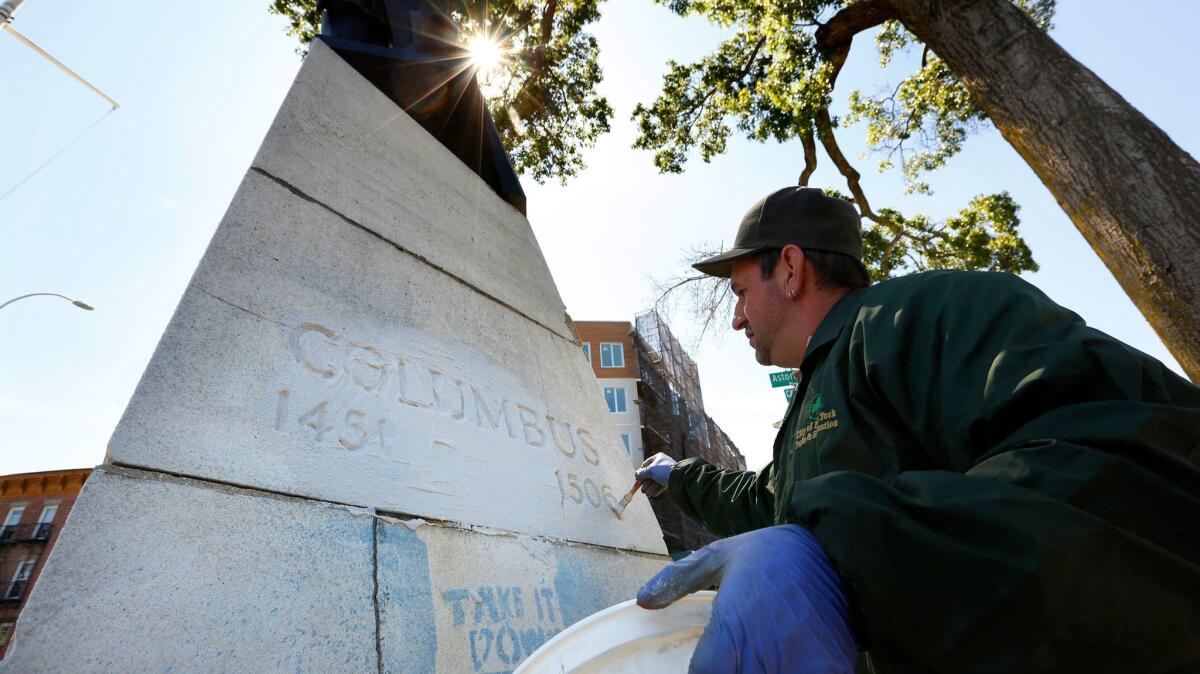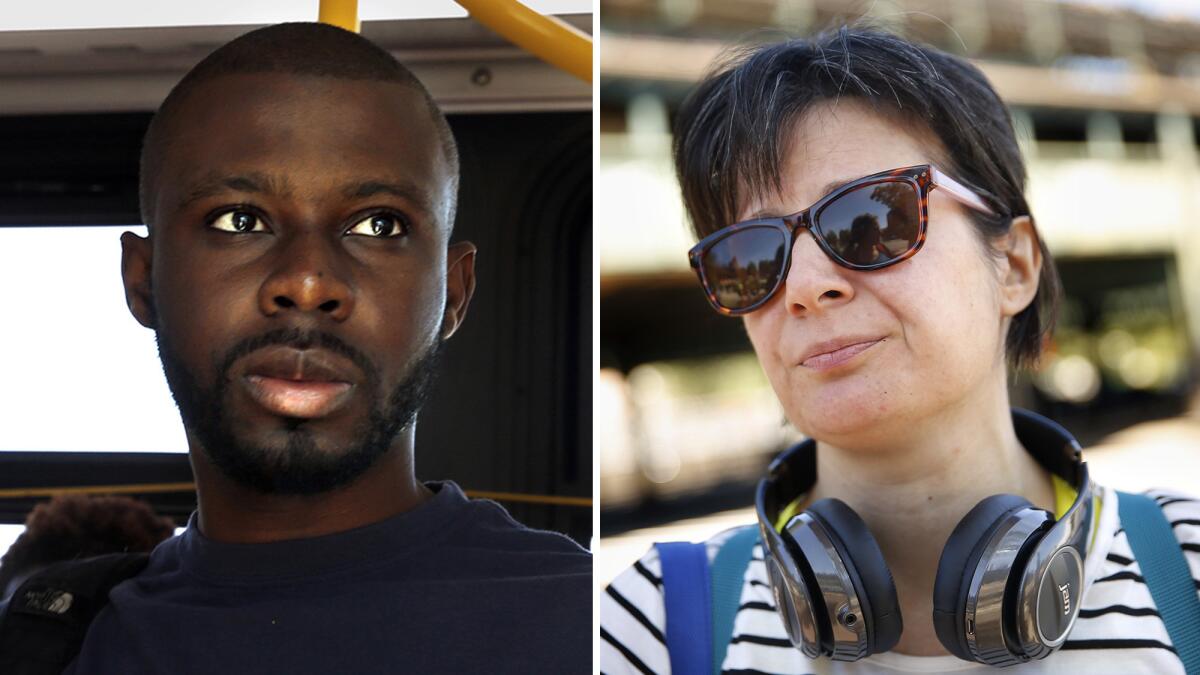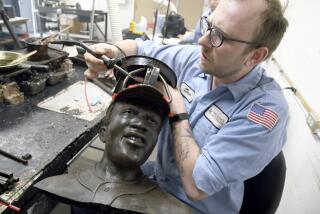No longer on a pedestal: New York debates Christopher Columbus statues and the explorer’s legacy

Reporting from New York — One statue in the nearby city of Yonkers was decapitated, the head dumped next to a trash can.
Another in Queens was defaced overnight with stenciled blue spray paint around the pedestal reading, “Tear it down. Don’t Honor Genocide.”
Monuments to Christopher Columbus are under siege throughout New York and beyond. While vandals have taken matters into their own hands, politicians are busy debating the Italian explorer’s past and future as a national hero worthy of so many markers.
The debate over Columbus is an especially tricky matter in New York, which is home to the largest Italian American population in the country.
The speaker of the New York City Council, Melissa Mark-Viverito, has proposed removing the 76-foot-tall likeness of the explorer from its pedestal at the eponymous Columbus Circle, a prominent landmark in the city lying at the foot of Columbus Avenue near Central Park.
Long venerated as a symbol of Italian American pride, Columbus also is blamed for the extermination of native populations throughout the Americas and the introduction of the slave trade.
The Los Angeles City Council on Wednesday voted to replace next month’s Columbus Day holiday with “Indigenous People’s Day.” Seattle, Albuquerque and Denver had done so earlier.
Although controversy about Columbus has been around almost as long as the statues, the issue gained traction after the removal of Confederate monuments last month sparked violent protests by white supremacists in Charlottesville, Va.
In New York, Mayor Bill de Blasio, himself of Italian heritage, opened a Pandora’s box last month when he announced on Twitter that “after the violent events in Charlottesville, New York City will conduct a 90-day review of all symbols of hate on city property.”
The mayor’s announcement has provoked demonstrations from Italian Americans and a flood of complaints. People have threatened to boo him if he joins, as promised, the city’s annual Columbus Day parade scheduled for Oct. 9.
“When you start tearing down statues, it is a slippery slope,” complained Sal Albanese, who is challenging de Blasio in the Democratic primaries Sept. 12.
Albanese, who came to the United States from Italy when he was 8, said that the statue at Columbus Circle, created by Italian sculptor Gaetano Russo in 1892, was funded by hard-earned contributions from Italian immigrants who were fighting back against the discrimination against their community at the time.
“Tearing down the statue would cause a lot of animosity and division,” Albanese said.
He has endorsed a plan by Columbia University professor David Eisenbach, a candidate for public advocate, to keep the statue in place, but to turn the public plaza around it into an educational forum with information about the history of conquest and slavery. De Blasio has called for a simpler “explanatory plaque” on the base of the statue.
But leaving Columbus statues in place carries risks too.
The statue in Yonkers was beheaded on Aug. 27. Earlier in the month, a Columbus statue in Baltimore was vandalized by an activist who posted videos of the damage on YouTube.
The vandalism to the statue in the Astoria neighborhood of Queens was reported on Thursday morning.
By Friday, an employee with the city’s parks department was sloshing white paint over the graffiti. People crossing the busy traffic island known as Columbus Triangle, walking between a Starbucks and a subway trestle, paused to take photographs and reflect.
“You know, I lived near this statue for years and never really noticed,” said Matthew Valencia, a 31-year-old construction worker who grew up in the neighborhood. “But once you think about it, you can’t be oblivious to the obvious. You have to recognize how this country was founded.”

Patricia Silva, 42, a photography teacher and immigrant from Portugal, said the controversy has been thought-provoking in one of New York’s most ethnically diverse neighborhoods.
“What are we complicit in by defending this statue and the myths it promotes?” she asked.
A Haitian immigrant, 23-year-old Herve Monestime, a mechanical engineering student, was more kindly disposed to Columbus, despite his role in the extermination of the indigenous population of the Caribbean island.
“If it weren’t for Columbus, Haiti wouldn’t be Haiti. I can’t say he was completely a bad guy. He was somebody who took a lot of risks. He was a brave guy,” Monestime said.
Columbus is not the only historical figure to be targeted in the escalating monuments war.
One Jewish group has asked that the name and image of Peter Stuyvesant be scrubbed from New York because of the virulent anti-Semitism of the 17th century Dutch governor. Harlem residents have reopened their demands to remove a statue from Central Park of J. Marion Sims, a gynecologist who experimented on enslaved African American women.
ALSO
A black mayor who leads the former capital of the Confederacy sees both sides of the monument debate
This Confederate history activist condemns white supremacists but says Trump was right
More to Read
Sign up for Essential California
The most important California stories and recommendations in your inbox every morning.
You may occasionally receive promotional content from the Los Angeles Times.










